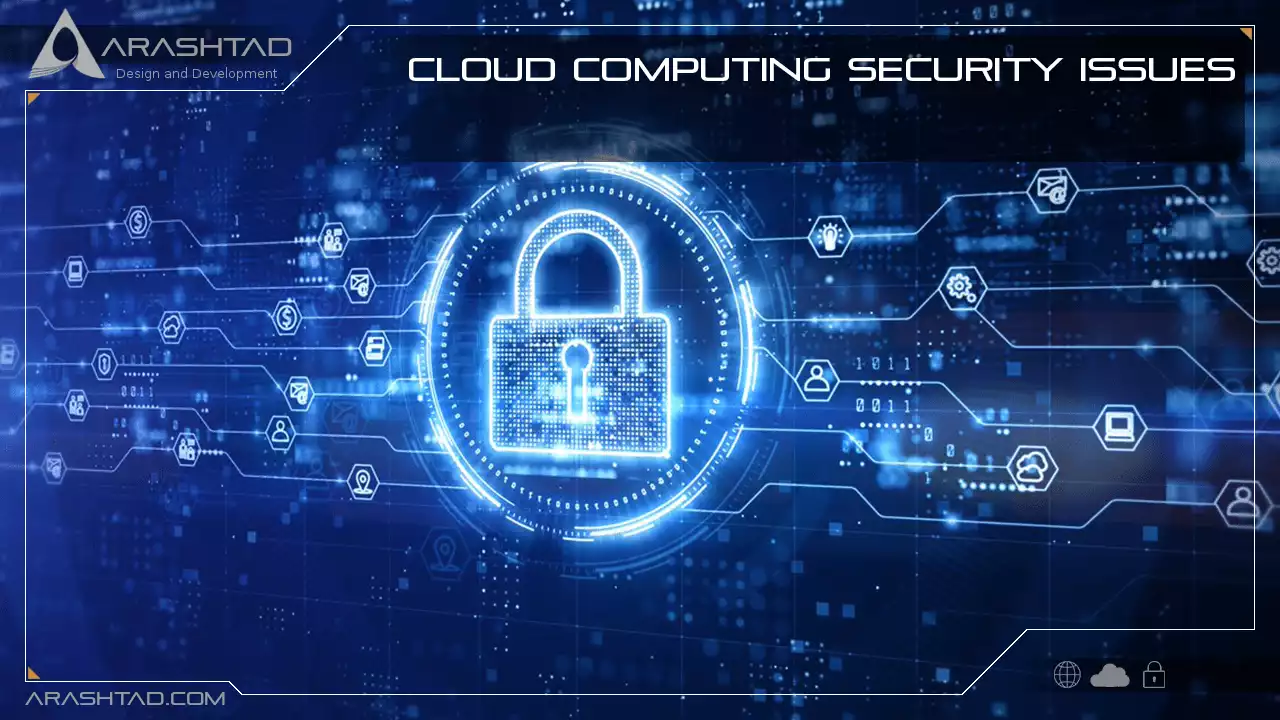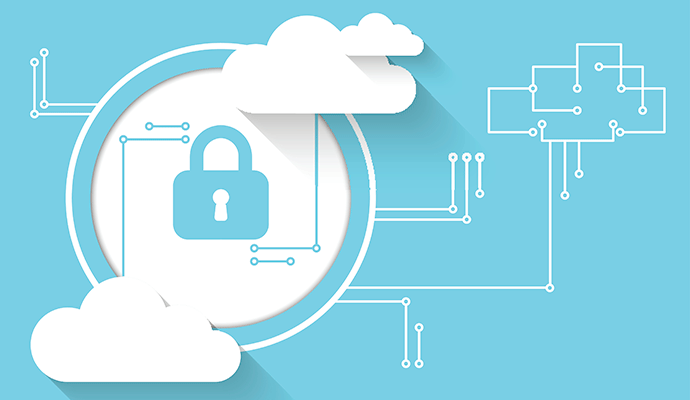Cloud Computing Security Issues
Cloud security issues have skyrocketed as more of our life activity moves online. The actions of malicious criminals have begun to expose many cloud vulnerabilities in the wake of recent events, leading many IT teams worldwide to take note. Cloud security is quickly becoming a priority as cybersecurity threats across the digital landscape have risen during the outbreak. Our guide taught you how to secure data in the cloud and deal with cloud security challenges.
Cloud security threats
There are three categories of security hazards associated with cloud computing services:1- System vulnerabilities are the technical side of threats, which need to be addressed by IT-capable staff proactively.
2-Continual training and education are essential for preventing human errors and negligence.
3- The technical and human weaknesses that allow attackers to attack a cloud system ultimately limit their power. However, attackers have an advantage in manipulating both technical and human weaknesses.
Despite the possibility of zero-day exploits, many attackers use easier, known techniques to infiltrate cloud systems. Here are some specific issues that affect cloud usage.
Configuration of cloud services
A cloud-based framework requires extensive safeguards on the backend to reduce its vulnerability to online attacks. Misconfigured cloud systems are quite common as many workplaces set up remote systems for the first time. Several IT departments have rushed through setting up the cloud due to inadequate time to do a detailed setup.A lack of policy awareness is one of the main reasons for the ineffective management of these threats, according to Fugue’s April 2020 survey. Moreover, teams do not have adequate monitoring and regulation in place for all the software APIs that interact with the cloud. With so many layers of permissions and controls that had not been operations-essential before, it is not surprising that IT teams are unprepared.
Details of configuration
As with the remote work transition, a lack of stress testing is equally concerning. Testing at the capacity of a whole worksite — or dozens or hundreds of worksites — requires repeated testing at capacity. Without it, system stability cannot be guaranteed and can unintentionally lead to an otherwise secure infrastructure functioning. The issues include unfamiliar procedures being implemented and tested simultaneously. Concurrent troubleshooting and course correction may lead to long working hours that prevent IT, teams from performing at their best. It is possible for malicious criminals to gain access to each of these weaknesses.BYOD Policies that allow employees to work from home
Some organizations have enacted Bring-Your-Own-Device (BYOD) policies to make remote work more convenient and flexible. However, this can lead to many possible security breaches for corporate IT systems. Devices used for personal and work purposes increase the risk of stray malware infecting cloud systems. Personal devices are generally kept separate from enterprise devices in most workplaces, thereby reducing contact with unsecured accounts and files of endpoint users. Your IT team secures onsite networks with firewalls, safeguards Wi-Fi routers, and manages even employer-provided phones. Whenever an attack is possible, they update the security protocols and software.Concerns associated with using unsecured personal devices:
Many companies lack remote-ready enterprise computers and phones for their employees in a new remote connectivity environment that has left them blind. One of the many concerns associated with using unsecured personal devices is existing malware infections. Malicious criminals can easily exploit outdated operating systems and other device software. Family members’ devices on an employee’s home network can also be vectors for malware. Despite secure IT-vetted hardware, when users do not check the security of their home networks, much of the earlier onsite protections are rendered irrelevant.Cyberattacks and social engineering:
It has become more difficult for threat criminals to exploit any unattended holes in cloud architecture to profit or disrupt organizations, even at such a sensitive time.Phishing aims to fool victims into revealing their valuables or accessing private areas by posing fraudulently as trusted individuals or authorities. This is usually a term used to refer to the online theft of account credentials or money. Employees and individuals alike have found social engineering methods such as this attractive for obtaining access to cloud systems.
Fraudulent phishing attacks impersonate trusted parties and entice victims to open infected files or links by impersonating them. Employees can infect a company’s cloud storage, databases, or other networked structures. When infected, these types of malware can cause a wide range of disruptions or, more commonly, a data breach across the organization.
Other forms of attack:
Credential stuffing, or the inputting of stolen credentials from other accounts into various services, is one form of brute force attack in cloud infiltration. Using passwords and usernames across multiple accounts is one of the attacks that attackers try to exploit. Typically, they will acquire stolen credentials from existing account breaches, which they will then sell on the Dark Web. Rapid attempts to log in from many distant locations are signs of this activity.Cloud servers and frameworks may become overwhelmed by distributed denial-of-service (DDoS) attacks, disrupting or taking services offline. Attackers may use botnets and phishing threats to access a system and create a preassembled computer “army” for attacks. Several organizations on cloud-based systems are even more vulnerable to DDoS attacks because of their ease of execution and disruption to web-based operations.
Cloud security: How to Protect Your Data:
1- A virtual private network can make your data anonymous and private between devices and your cloud. VPNs usually use encryption to prevent eavesdropping.
2- It is not necessary to store all sensitive data encrypted, but it is essential to store encrypted data. You may decide that encryption is unnecessary for files and other data you already share publicly, but best practices would entail it for files like tax documents and other private data. Be aware that losing your encryption keys can result in loss of access.
3- Make sure you deploy encryption carefully: To avoid storing cloud encryption keys in vulnerable places, such as onboard computers, you’ll want to make sure they are not stored there.
4- If you choose a security service that monitors your identity, Kaspersky Security Cloud will notify you if your data is compromised at a cloud provider. This service will report any failures in your encryption methods to you.
SMB Security:
To ensure the security of your SMB or Enterprise systems, you should consider the following:1- You can control how your business handles encryption by encrypting data before storing it in the cloud. Secure your data in transit to and from your cloud service with end-to-end encryption. Ensure sensitive information, such as financial or proprietary company information, is protected from intrusion.
2- Encryption keys usually need to be controlled and guarded carefully, which is why you need to know whether your cloud provider manages them for you or if you will have to keep them on your own.
3 – Use a cloud security solution: Maintaining your data encryption efforts can be difficult without assistance. However, security products such as Kaspersky Hybrid Cloud Security can assist you in evaluating how to improve your local and cloud security efforts while simultaneously protecting you from new threats.
Conclusion:
As a result of the cloud, businesses can scale and be more available, reduce costs, and implement more quickly. However, cloud security concerns accompany these benefits. With more data stored in the cloud, it is essential to mitigate potential risks. This article discussed the most significant cloud computing security issues and some tips on protecting your data against cloud security threats.Download this Article in PDF format

Arashtad Custom Services
In Arashtad, we have gathered a professional team of developers who are working in fields such as 3D websites, 3D games, metaverses, and other types of WebGL and 3D applications as well as blockchain development.
Arashtad Services
Drop us a message and tell us about your ideas.
Fill in the Form
Blockchain Development


